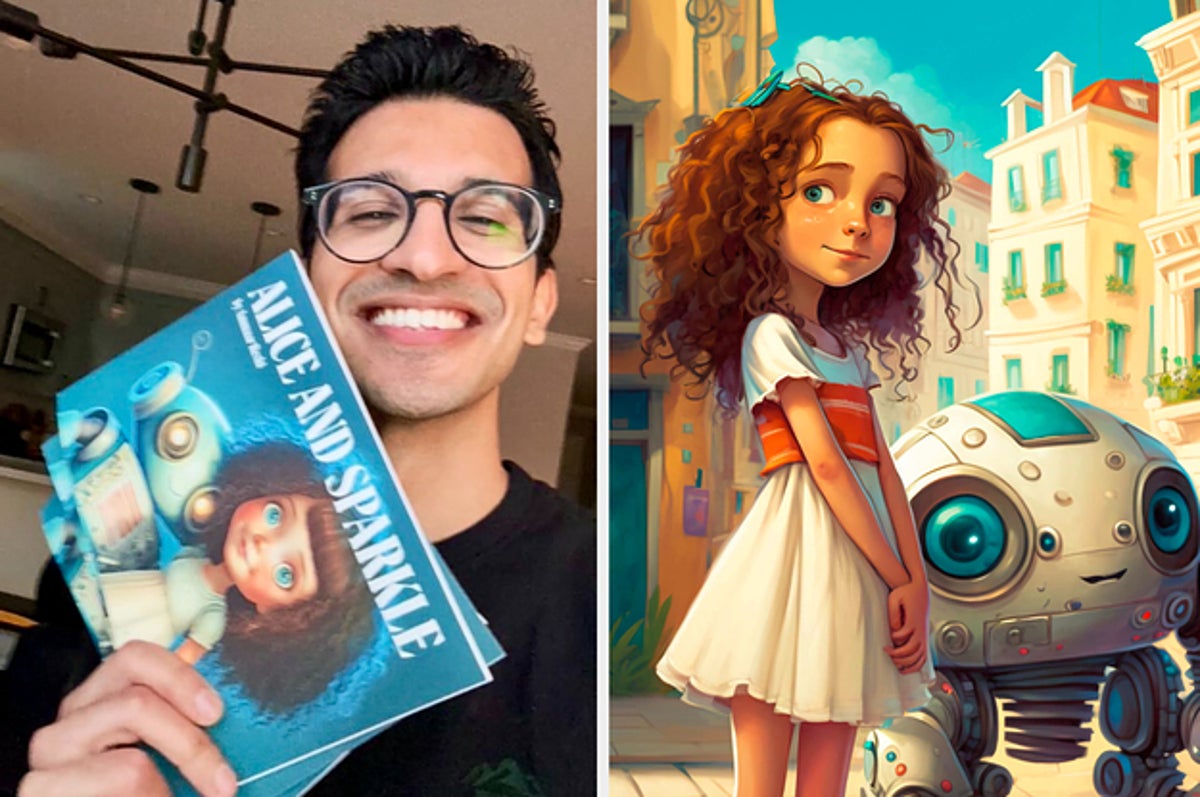Ammaar Reshi, 28, has loved technology ever since he was a little boy. Before his family relocated to the UK, he was raised in Pakistan. Reshi studied computer science in London, United Kingdom. Then, Reshi moved to Palo Alto, California, thanks to a job with Palantir Technologies. In addition, Reshi started experimenting with numerous generative AI tools appearing on the market in recent months.
He has been employed at Brex, a fintech startup, since 2020. He is currently the design manager. Reshi had the notion earlier this month to use AI to create a book for the child of his best pals, who was born this year.
Reshi created a story using ChatGPT about Alice
First, Reshi created a story using ChatGPT about Alice, a young girl interested in learning about technology, and Sparkle, an adorable robot that assists her. “That gave me a base of a story,” Reshi said. “It was OK. It had its issues, of course. So then I started tweaking it.”
He requested ChatGPT to increase Sparkle’s self-awareness and Alice’s curiosity. The desired photos were then produced by Reshi using the AI software Mid journey.
He spent much time fine-tuning the Mid journey prompts. Also, he estimates that he had to reject “hundreds” of images before arriving at the 13 that make up the book’s 14 pages. When it came down to it, he added, “I almost gave up because I was like, I don’t know if it’s possible, but then I just pushed through at the end,” he said.
Just 72 hours after initially coming up with the concept, Reshi submitted the finished product to Amazon’s Kindle Direct Publishing, which published Alice and Sparkle on Amazon on December 4th. Reshi initially wanted to create the book for the child of one of his friends. But when he announced on Instagram that he had used artificial intelligence to write a book. But more of his friends started to inquire about purchasing it.

AI is taught using other people’s creation
Others urged him to broadcast the release’s news more widely. People, including children’s book artists, condemned Reshi for automating the process at the expense of human creativity when he tweeted about the book.
Dom said that the drawings in Alice and Sparkle include “quite a few oddities,” some of which Reshi has acknowledged publicly.
She is particularly troubled by the fact that platforms for generative AI are taught using other people’s creations, a problem many artists have already raised as a problem.
Reshi said he wasn’t prepared for the criticism. “The thing that upsets me the most is, I think it’s very valid that these artists have real concern and have a passionate response and feel threatened,” he said. “I understand as an artist if you see this as an existential threat to your livelihood. This makes absolute sense.”
Reshi claimed to have received texts promoting self-harm
Reshi claimed to have received texts promoting self-harm and death threats. “If we can’t have discourse without being civil, then we’re not going to make progress,” he said. He added that the strength of the reaction had made him think more about the issues at hand. “It’ll make me do more homework, for sure,” he said. “I want to do the right thing. I want to help support the artists if I can.”
He saw the experience as a lesson and a chastening one overall. “It is crucial to paraphrase that, “Honestly, the way that argument has gone down makes me unhappy. The harsh words and the insults are not enjoyable to read.”
Reshi is unsure if Alice and Sparkle’s tale will continue in a subsequent chapter. I will wait until I understand more about how this work is being utilized and whether there are methods to use it while still safeguarding artists before I do that, he added. However, I want to put it into practice rather than just lecture about it.












